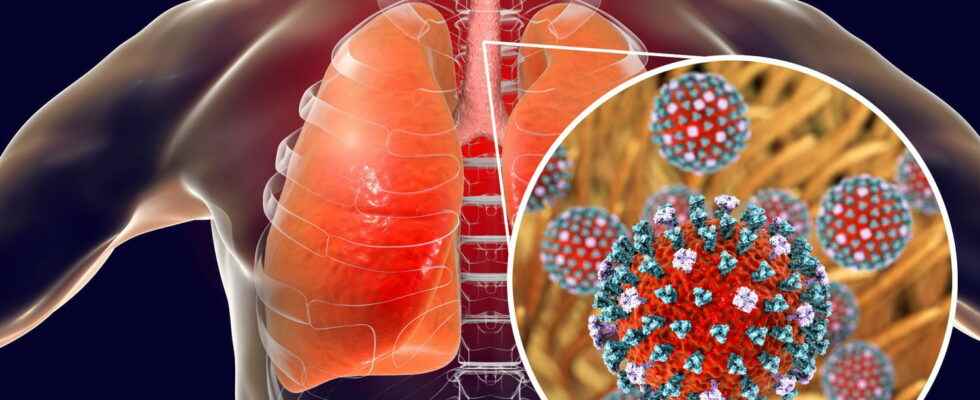The influenza A(H3N2) virus is the most frequently detected influenza subtype this season in France. What are its characteristics ? What symptoms does it cause? Is it resistant to the vaccine?
This winter, the flu epidemic is mainly carried by influenza A(H3N2) virusindicate the latest bulletins from Public Health France. What is this virus? His characteristics ? What symptoms does it cause? Is he resistant to the vaccine this year? It should be noted that the flu affects 2 to 8 million people in France each year.
Definition: what is the H3N2 virus?
The H3N2 virus is a subtype of influenza A. It is the most common virus in France for the 2022-2023 flu epidemic. It is so named because it refers to two antigens present on the surface of the virus:
- Hemagglutinin type 3 (H3)
- Neuraminidase type 2 (N2)
The H3N2 virus has emerged in France in 1968 where he was responsible for a major pandemic (hong kong flu) with 31,000 deaths in France in less than two years.
What are the characteristics of the H3N2 virus?
Of the 257 viruses detected in mainland France during the 2022-2023 influenza epidemic, 237 were type A (200 subtype A(H3N2), 29 subtype A(H1N1)pdm09 and 8 were not still subtyped). The H3N2 subtype is therefore largely in the majority this year. Also in Europe, the H3N2 virus accounts for 77% of type A influenza viruses detected (90%). Viruses A and B cause seasonal epidemics in humans, but only type A viruses have been responsible for pandemics to date, points out Public Health France. In other words, only type A viruses have pandemic potential.
Diagram of the structure of the H3N2 virus
What is the difference with the H1N1 virus?
Based on their surface proteins, hemagglutinin (H) and neuraminidase (N), type A influenza viruses are classified into subtypes denoted as follows: H(digit)N(digit). H1N1 and H3N2 are all both strains of influenza Abut they do not have the same hematoggglutanina protein present on the surface of the influenza virus which allows the attachment of the viral particle to a target cell and neuraminidase, an enzyme present in the envelope of influenza viruses essential for viral replication. The H1N1 subtype is composed of a hemagglutinin type 1 and a neuraminidase type 1, while the H3N2 subtype is composed of a hemagglutinin type 3 and a neuraminidase type 2.
What symptoms do they cause?
The H3N2 virus causes typical flu symptoms more or less severe depending on the people infected, namely:
- A great tiredness
- Chills even when it’s not cold
- A dry, painful cough
- A fever that can rise to more than 39°c
- Body aches
- Headaches…
Is the H3N2 virus resistant to the vaccine?
According to the antigenic characterization (inhibition of hemagglutination) carried out by the CNR in mainland France on December 13, 2022, of the 103 A(H3N2) viruses characterized, 91 are antigenically related to the vaccine strain A/Darwin/9/2021 (clade 3C .2a1b.2a2) present in the Northern Hemisphere (HN) 2022-23 vaccine, including France. In other words, the vaccines injected in France (INFLUVAC TETRA®, FLUARIX TETRA®, VAXIGRIPTETRA®, EFLUELDA®) in 2022/2023 provide protection against the H3N2 virus. These flu shots are quadrivalent : they contain the representative strains of the two A virus subtypes, A(H1N1)pdm09 and A(H3N2), and the two B virus lineages, B-Yamagata and B-Victoria, responsible for seasonal epidemics.
Sources: WHO / Public Health Epidemiological Bulletin France / French Society of Microbiology (SFM) / Institut Pasteur

